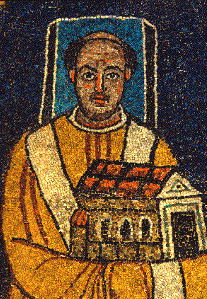Text from Wikipedia - the free encyclopaedia,
"In The Choir of Aachen Cathedral".
Artist: Franz Stegmann (1831–1892).
Date: 1890.
Author: Franz Stegmann (1831–1892).
(Wikimedia Commons)
Franz Stegmann (born
16 September 1831, in
Gandersheim, Germany; died
18 April 1892, in
Dusseldorf, Germany) was a painter of architecture of The
Düsseldorf School.
Stegmann was the son of a Magistrate in the
Duchy of Brunswick, Germany. He spent three years studying
architecture in Braunschweig. Then, he switched to
painting and attended the Academies in
Brussels (1854 at CA Wauters),
Munich (1855-1857), as well as
Dusseldorf, where he settled in 1857 and joined the Malkasten Artists' Association. He also joined the
Kunstverein München.
Stegmann undertook Study Tours to Italy, France and The Netherlands. He also exhibited in Berlin, Hanover and Dusseldorf.
Aachen Cathedral,
Germany.
Photo:: 13 April 2012.
Source: Own work.
(Wikimedia Commons)
English: Saint Joachim, Saint Anne (with Mary and Jesus, as children), Saint Joseph.
Statues on the exterior of Aachen Cathedral, Germany.
Français: Saint Joachim, Sainte Anne (avec l'enfant Jésus et Marie), Saint Joseph, statues au dessus d'un porche de la cathédrale, Aix-la-Chapelle, Allemagne.
Photo: 21 December 2013.
Source: Own work.
(Wikimedia Commons)
Aachen Cathedral, also referred to as The Kaiserdom (Imperial Cathedral) of Aachen,
is a building of great historical, architectural and religious importance. Built by Charlemagne in 805 A.D., its unique design was highly influential on German Church architecture and it was a site of Imperial Coronations and pilgrimage for many Centuries.
Photo: 6 June 2010.
(Wikimedia Commons)
Aachen Cathedral (
German: Aachener Dom), Traditionally known in English as The Cathedral of Aix-la-Chapelle, is a
Roman Catholic Church in
Aachen,
Germany. It is the oldest C
athedral in Northern Europe and was constructed by order of The Emperor
Charlemagne, who was buried there in 814 A.D. For 595 years, from 936 A.D. to 1531, the Aachen Chapel was the Church of C
oronation for thirty
German Kings and twelve Queens. The Church has been The Episcopal Seat of The
Diocese of Aachen since 1802.
Charlemagne began the construction of The
Palatine Chapel around 796 A.D., along with the building of the rest of the Palace structures. The construction is credited to
Odo of Metz. The exact date of completion is unclear. However, a Letter from
Alcuin, in 798 A.D., states that it was nearing completion, and, in 805 A.D., Pope
Leo III Consecrated the finished Chapel. A Foundry was brought to Aachen near the end of the 8th-Century A.D. and was utilised to cast multiple bronze pieces, from doors and the railings to the horse and bear statues.
Charlemagne was buried in the Chapel in 814 A.D. It suffered a large amount of damage in a
Viking raid in 881 A.D., and was restored in 983 A.D. After
Frederick Barbarossa Canonised Charlemagne, in 1165, the Chapel became a draw for pilgrims. In order to sustain the enormous flow of pilgrims in the
Gothic period, a Choir Hall was built, in 1355, and a two-part Capella Vitrea (Glass Chapel) which was Consecrated on the 600th Anniversary of Charlemagne's death. A C
upola, several other Chapels and a S
teeple were also constructed at later dates. It was restored again in 1881, when the
Baroque stucco was removed. In 1978, it was one of the first twelve items to make the entry into the
UNESCO List of
World Heritage Sites, as the first German, and one of the first three European, historical ensembles.
English: Illuminated Apostle Cycle on the occasion of The 600-Year Festival,
Français: Cycle d'Apôtres illuminés à l'occasion de la semaine de fête
Nederlands: Verlichte Apostel cyclus op het festival
Photo: 14 September 2014.
Source: Own work.
(Wikimedia Commons)
The Cathedral uses two distinct architectural Styles, with small portions of a third Style, First, the core of the Cathedral is the
Carolingian-
Romanesque Palatine Chapel, which was modelled after
San Vitale at
Ravenna, Italy, and is notably small in comparison to the later additions. Secondly, the Choir was constructed in the
Gothic Style. Finally, there are portions that show
Ottonian Style, such as the area around The Throne.
Between 1355 and 1414, on the initiative of the
Marienstift and the Mayor of Aachen,
Gerhard Chorus (1285–1367), a
Gothic Choir was built to the East of The Octagon. Before this, there must have been a rectangular Carolingian Choir.
The Gothic Choir measures twenty-five metres in length, thirteen metres wide and thirty-two metres high. Its external wall is broken, as much as possible, by windows - the surface area of the glass is more than 1,000 m² and led to the name
Glashaus (Glass House). This was conceived as a Glass
Reliquary for The Holy Relics of Aachen and for the body of Charlemagne.
The design is arranged on the model of The
Sainte-Chapelle,
Paris, France; likewise a space for important Relics and a Royal Palace Chapel. For the protection of the Vault of The Choir, iron rods were built in at the time of construction, to counter the lateral force on the narrow Stone Supports and to allow as much space as possible between them for window space.















































